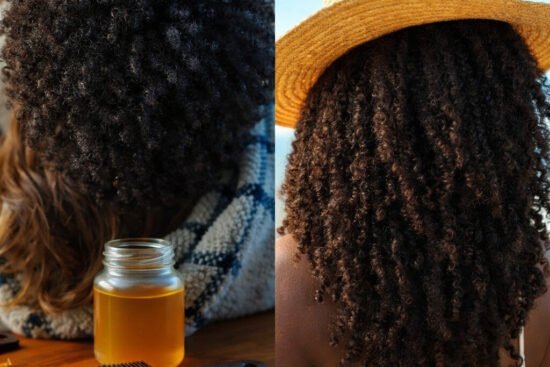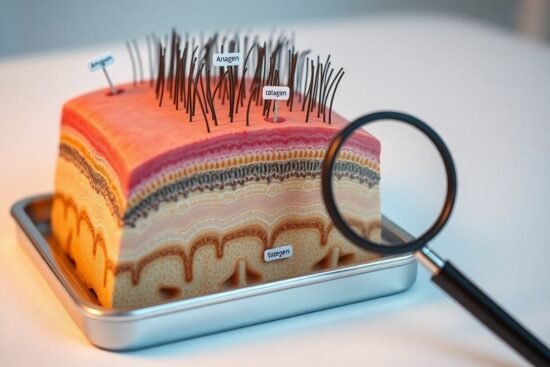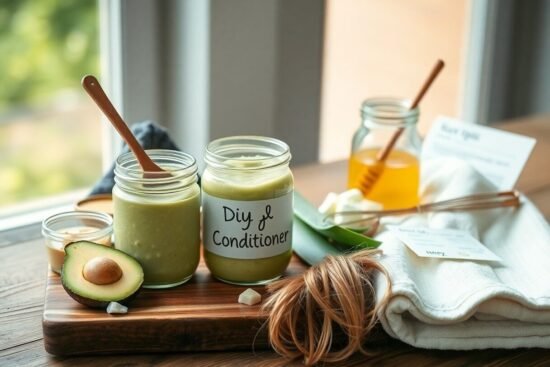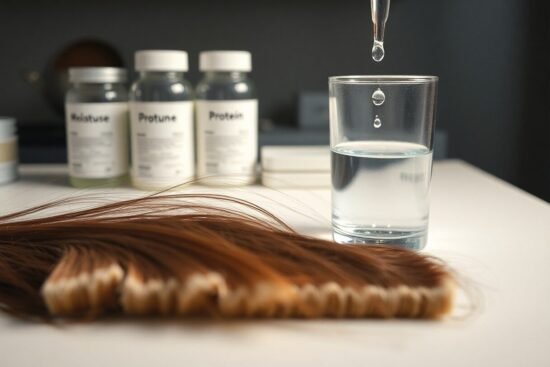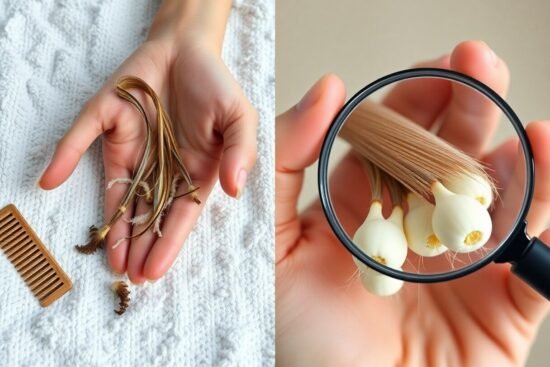
Winter is one of the most challenging seasons for natural and textured hair. The cold, dry air combined with indoor heating can strip your hair of moisture, leaving it brittle and prone to breakage. For African American women, maintaining a healthy haircare routine is crucial to ensure hydration, minimize damage, and promote growth. This step-by-step guide provides an in-depth winter haircare routine, from cleansing to protective styling, tailored to meet the unique needs of African American hair.
Step 1: Pre-Wash (Weekly or Biweekly)
Why It’s Important
Pre-wash treatments protect your hair from becoming overly stripped during cleansing. They add a layer of moisture and strengthen strands before shampooing.
How to Pre-Wash
- Apply an Oil or Conditioner: Use a lightweight oil or moisturizing conditioner to coat your hair.
- Recommended Products:
- Coconut Oil ($10): Penetrates the hair shaft to reduce protein loss.
- Aunt Jackie’s Knot On My Watch Instant Detangler ($7): Adds slip and moisture for easy detangling.
- Recommended Products:
- Detangle Gently: Use a wide-tooth comb or your fingers to remove knots.
- Let it Sit: Leave the treatment on for 15–30 minutes before shampooing.
Step 2: Cleansing (Weekly)
Why It’s Important
Cleansing removes product buildup, dirt, and sweat from the scalp, which is essential for healthy hair growth. However, winter hair needs gentle shampoos that don’t strip away natural oils.
How to Cleanse
- Choose Sulfate-Free Shampoos: These are gentler on natural hair and help retain moisture.
- Recommended Products:
- SheaMoisture Coconut & Hibiscus Curl & Shine Shampoo ($11): Cleanses without drying, leaving hair soft and shiny.
- Pattern Hydration Shampoo ($20): Provides intense hydration for curly and coily hair.
- Recommended Products:
- Focus on the Scalp: Massage shampoo into your scalp to lift dirt and buildup while letting the suds gently cleanse your strands.
- Rinse with Lukewarm Water: Avoid hot water, which can dry out your hair.
Step 3: Conditioning (Every Wash)
Why It’s Important
Conditioning restores moisture and provides slip for detangling, minimizing breakage and making hair more manageable.
How to Condition
- Apply Generously: Coat your hair from roots to tips with a moisturizing conditioner.
- Recommended Products:
- Aussie Miracle Moist Conditioner ($6): Contains avocado and jojoba oil for deep hydration.
- TGIN Triple Moisture Replenishing Conditioner ($15): A thick, creamy formula perfect for dry, textured hair.
- Recommended Products:
- Detangle: Use a wide-tooth comb or detangling brush to remove knots, starting from the ends and working your way up.
- Rinse Thoroughly: Ensure no residue is left behind.
Step 4: Deep Conditioning (Weekly)
Why It’s Important
Deep conditioning provides intense moisture and repair, which is especially important during winter when hair is prone to dryness and damage.
How to Deep Condition
- Choose a Hydrating Deep Conditioner:
- Recommended Products:
- TGIN Honey Miracle Hair Mask ($18): Contains raw honey and olive oil for deep hydration.
- Mielle Organics Babassu Oil & Mint Deep Conditioner ($14): Balances moisture and protein for healthier hair.
- Recommended Products:
- Apply and Distribute: Section your hair and apply the mask from root to tip.
- Cover with Heat: Use a plastic cap and sit under a hooded dryer or wrap a warm towel around your head to enhance penetration.
- Rinse Thoroughly: Remove all traces of the deep conditioner to prevent buildup.
Step 5: Leave-In Conditioner (Daily or As Needed)
Why It’s Important
Leave-in conditioners provide ongoing moisture and protection, making your hair more manageable and less prone to breakage.
How to Use Leave-In Conditioner
- Apply to Damp Hair: After washing or refreshing, use a leave-in conditioner to lock in moisture.
- Recommended Products:
- Cantu Shea Butter Leave-In Conditioning Repair Cream ($7): Repairs and hydrates.
- Kinky-Curly Knot Today Leave-In Conditioner ($12): Adds slip and hydration for easier styling.
- Recommended Products:
- Focus on Ends: Apply more product to the ends of your hair, which are the oldest and most vulnerable parts.
Step 6: Sealing and Styling (Daily)
Why It’s Important
Sealing locks in moisture from your leave-in conditioner, while styling keeps your hair protected and reduces manipulation.
How to Seal and Style
- Use Lightweight Oils or Butters:
- Recommended Products:
- Jamaican Black Castor Oil ($7): Seals in moisture and promotes growth.
- Camille Rose Almond Jai Twisting Butter ($16): Perfect for twists and braids.
- Recommended Products:
- Style into Protective Hairstyles: Try braids, twists, or buns to minimize manipulation and protect your ends from the elements.
Step 7: Scalp Care (Weekly or As Needed)
Why It’s Important
A healthy scalp is the foundation for healthy hair. Winter can lead to a dry, flaky scalp, so regular nourishment is key.
How to Care for Your Scalp
- Massage Oils into Your Scalp:
- Recommended Products:
- As I Am Dry & Itchy Scalp Care Olive & Tea Tree Oil Treatment ($10): Soothes and moisturizes dry, itchy scalps.
- Mielle Rosemary Mint Scalp & Hair Strengthening Oil ($10): Stimulates growth and nourishes the scalp.
- Recommended Products:
- Avoid Heavy Buildup: Cleanse your scalp regularly to prevent clogged pores.
Step 8: Nighttime Care (Daily)
Why It’s Important
Nighttime care minimizes moisture loss and protects your hair from friction.
How to Protect Your Hair at Night
- Use Satin or Silk Accessories:
- Recommended Products:
- Satin Pillowcase ($10): Prevents moisture loss and friction.
- Satin Bonnet ($7): Keeps hair hydrated overnight.
- Recommended Products:
- Apply a Light Oil or Cream: Lock in moisture before bed.
Conclusion
The key to thriving winter hair for African American women is a consistent, hydrating routine that prioritizes moisture retention, protective styling, and scalp care. By following this step-by-step guide, you’ll maintain strong, healthy, and beautiful hair all season long.






